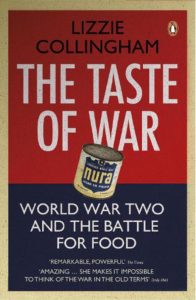Book groups. I’ve been in a couple, and they’re fun. Held after dinner, with wine (always with wine!) and something (from basic cheese-and-biscuits to lavish platters) to nibble. There is always a lot of talk, and only some of it about books. But a growing dislike of going out at night and a disinclination to drive out into the back-blocks (my night sight is awful, and there are always kangaroos leaping out in front of the car) has seen me take a break from my evening group this year.
At a recent meeting, the library manager told the Friends of the Library members that the staff are often asked about whether the library could run a book group. Could the Friends help?
Was she looking straight at me? Maybe, maybe not, but I put my hand up and this week we’ve just had our first meeting. A do-able time of 5 till 6, no wine but tea/coffee and TimTams on hand. A lovely bunch of people, and even a waiting list. Our local library system has over 300 sets of 10; I’ve asked the members to select something from the list but in the meantime I chose, more or less at random, The Great Fire by Shirley Hazzard. I had a memory of enjoying The Transit of Venus in my twenties. I kind of assumed this was about the Great Fire of London. One of the book group members put me right.
“The Great Fire,” he said, “is the atomic bomb. It’s about World War II.”
 Which seemed like a fitting coincidence, because the book I’ve just finished was also about the war. The Taste of War: World War Two and the Battle for Food is a fascinating popular history that provides an unfamiliar slant on the causes and conduct of the wars in Europe and the Pacific. Cycling through the different phases of the war, Lizzie Collingham first examines the situations in 1930s Germany and Japan. In both countries, the vulnerability of their own food supplies and reliance on imports hampered their potential as world powers.
Which seemed like a fitting coincidence, because the book I’ve just finished was also about the war. The Taste of War: World War Two and the Battle for Food is a fascinating popular history that provides an unfamiliar slant on the causes and conduct of the wars in Europe and the Pacific. Cycling through the different phases of the war, Lizzie Collingham first examines the situations in 1930s Germany and Japan. In both countries, the vulnerability of their own food supplies and reliance on imports hampered their potential as world powers.
The solution? Create an Empire. Germany and Japan both looked enviously at Britain, with its colonies and dominions supplying the nation’s needs for food and raw materials and acting as a market for British manufactures. How did they go about empire building? Invading neighbouring countries, for a start. Germany saw Eastern Europe as a massive farm and the Soviet inhabitants expendable. Japan had a similar plan when it invaded Manchuria.
From this beginning, Collingham takes in the logistics of supply and distribution, agricultural and nutritional science, politics and military strategy, and national and class differences. It is at times difficult reading. Over 20 million people starved to death or died of the diseases of malnutrition in WWII. Sometimes the deaths were incidental to the prosecution of the war; sometimes they were part of a deliberate policy of withholding sustenance. The Nazis “Hunger Plan” was basically the intention to starve whole populations to death by requisitioning all supplies. When, later in the war, this plan proved too slow (the Soviets, used to food shortages, were particularly resilient) the murder of so-called “useless eaters” was stepped up in the gas chambers of the Holocaust.
Both Germany and Japan exported hunger, but the Japanese government and military did not spare their own people. Soldiers and citizens alike were expendable; fighting spirit and national pride was supposed to sustain them. I was astonished to read that Japanese fighting men had to fend for themselves. Initially when there were still supplies, they cooked their own meals. Later, malnourished soldiers foraged for whatever they could find, existing on boiled grass and leaves, frogs, snakes and insects and eventually resorting to cannibalism in some cases.
The Allies don’t come out of this book as angels, either. Churchill attributed the millions of deaths from the 1943 famine in Bengal to “too many people” rather than bad policy on the part of the British. His refusal to lift the blockade resulted in the deaths of thousands of Greeks. And the American insistence on a virtually non-negotiable content of around 4,000 calories per day for its soldiers led to the situation of Allied civilians and military on an austere diet while the GIs in their midst were gorging.
Finally, Collingham’s look at global farming and agricultural networks through the lens of WWII history makes for sobering reflections about the future of food in the ever-warming climate of the 21st century…

This is so interesting. Isn’t it amazing how, all this time later, we are still finding new facets of history to examine (and hopefully learn from)?
So that’s why the American soldiers had all that chocolate, I suppose! Can you guess that my first history lessons came from children’s books 😉
I remember my dad, who served in the Australian army in the Pacific, telling us about American food. Canned chicken! Chocolate! They had a luxurious diet compared to bully beef and biscuits. I have been loaned another book by the same author, “The Hungry Empire: How Britain’s Quest for Food Shaped the Modern World”. I am a bit obsessed with food!